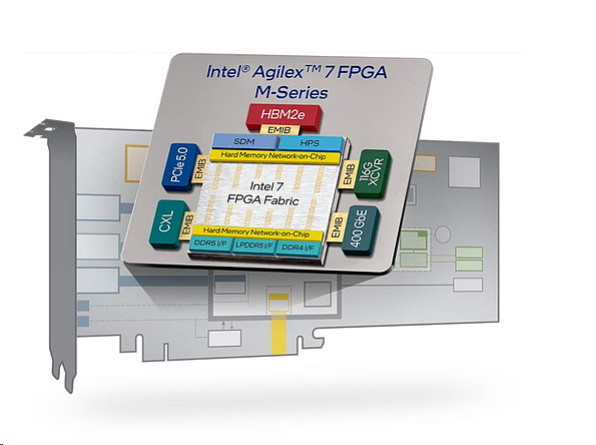Arkona explores a promising technology innovation for tier 1 live broadcast productions
Just like CPUs and GPUs, FPGAs offer flexibility and programmability. In fact, the ‘P’ in FPGA stands for programmable. For a long time, however, most FPGAs were integrated into custom-built proprietary hardware platforms that were expensive and manufactured in low volumes which led to high costs. The introduction of the PAC promises to change this and democratise access to the power of FPGAs.
PACs are designed to fit into the PCI express port of any standard computer just like a graphics card. A PAC combines high-capacity IP/Ethernet interfaces that connect directly to the latest generation FPGAs from Intel and AMD/Xilinx and can be programmed through software to perform any task that can be performed on an IP packet.
The PAC was designed to be a standardised form factor for compute-intensive tasks that could be done over an IP network. Initially they were adopted for applications such as high-frequency trading, high-speed firewalls, 5G test and measurement devices and gene sequencing. Lately however, AI inference (eg, the part that provides the answers once the AI model has been trained) is the fastest growing use case.
Manufactured by multiple vendors and sold through large IT suppliers – the definition of COTS – PACs are nowadays offered as a configuration option when ordering many standard rack servers which makes purchasing them a simple and seamless process.

The right tool for the job
While CPUs, GPUs and FPGAs are all similar in that they are programmable to perform any task, they have marked differences. CPUs are generalists and, thanks to their common instruction set, are extremely versatile and able to handle any task. GPUs on the other hand were initially designed for the very specific task of accelerating graphics and image processing but due to their parallel structure have also proven to have a great ability to handle other problems such as machine learning, albeit at the expense of high-power consumption.
FPGAs on the other hand are specialists. They also offer the ability to be customised through software, but they excel in performing a very particular function at high speed while retaining ultra-low latency and guaranteed performance. This makes them ideal candidates to meet the requirements for tier 1 live broadcast video production which is highly specialised and demands guaranteed throughput with low latency at high data rates.
The move to IP for specialised industries
While for a long time the media & broadcast industry relied on custom hardware platforms, the industry’s move to embrace IP technology has made it possible to utilise COTS compute platforms. Not surprisingly, the first broadcast applications built on COTS platforms were those that were able to use standard IT technology and had modest performance requirements. For example, non-linear editors which have no real-time requirements or audio processing with relatively low data rates.
As CPU processing speeds evolved and with the addition of GPU acceleration it became possible to add compressed, and subsequently uncompressed, real-time video processing such as ST2110. This however comes at the cost of throwing brute force compute at the problem since neither platform can be optimised for a specialised application such as uncompressed live video production.
With the development of COTS PACs, which feature high-speed network interfaces and a custom programmable FPGA, it is possible to access and process large amounts of IP video with low latency, guaranteed performance, all with low power consumption.
The most bang for the buck
A common COTS FPGA PAC today typically offers 4 x 100GE network interfaces, and with up to four of these fitting into a server this provides a processing density of 1.6Tbps in a single 1RU.
In addition, the industry has already announced that the next-generation 2 x 400GE PAC will start shipping next year, which will effectively double the processing capacity.
Compared to CPU and/or GPU processing platforms, current generation COTS FPGA PACs offer 10-20x the capacity with 90% less power consumption per RU, all while guaranteeing the latency and reliability that tier 1 live broadcasters’ productions have come to expect.
In addition, and maybe most importantly, thanks to economies of scale where COTS PACs FPGA address a much larger market and are therefore manufactured in much higher volumes than custom hardware, they are significantly more cost effective when compared to CPU and GPU as measured in $ per processed bit.
Another tool in the toolbox for live broadcast productions
There is no one-size-fits-all approach to the many and varied applications and use-cases that make up live broadcast production and therefore there are many instances where CPU and/or GPU processing are more appropriate than FPGA. There is no doubt, however, that for large-scale, uncompressed live video applications there is no other technology that offers a higher ratio of processing performance to price.
As such, clearly COTS FPGA PACs have a role to play in the future of tier 1 live broadcast productions and we should expect to see them make up part of the technology stack of the modern broadcaster and broadcast service provider.